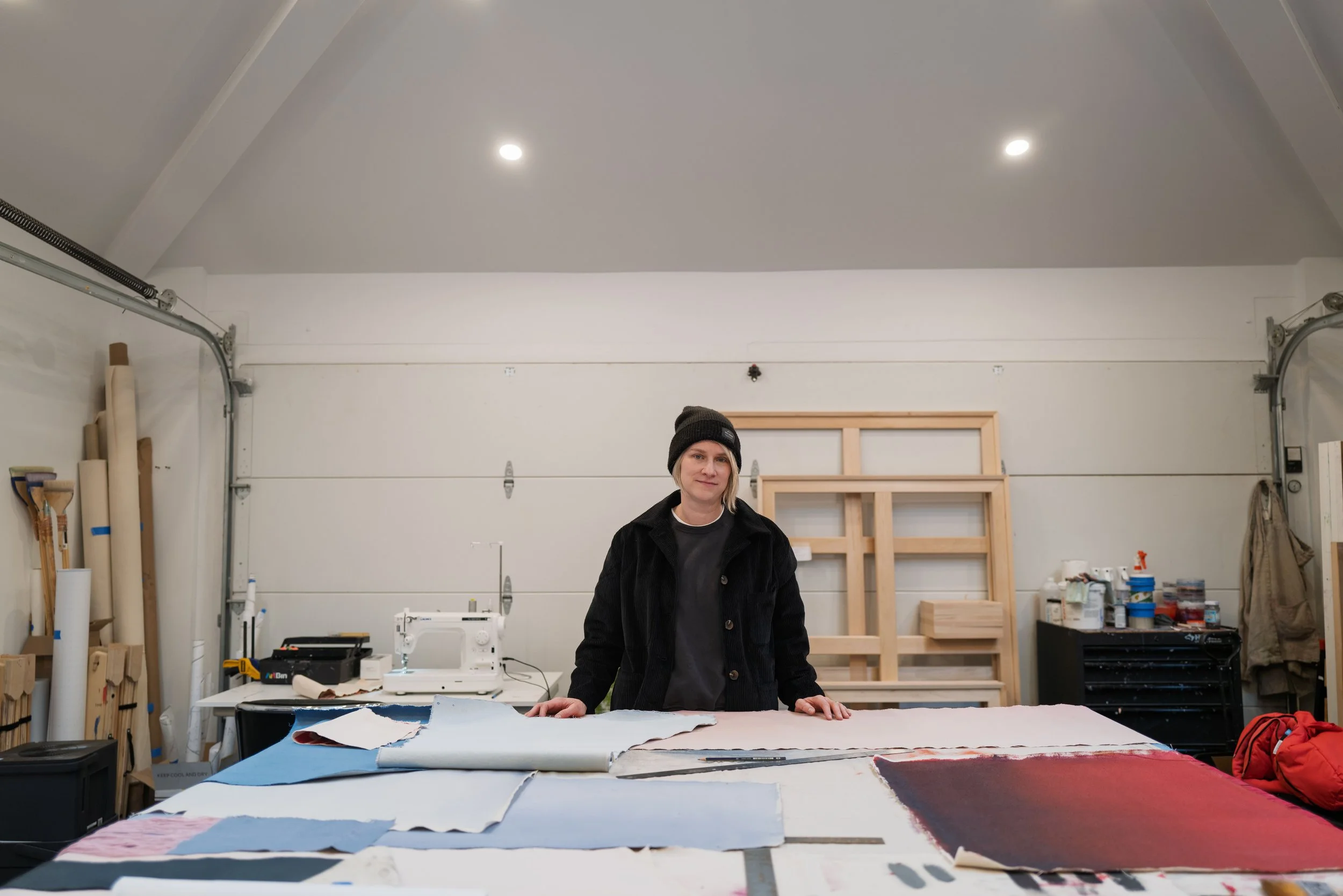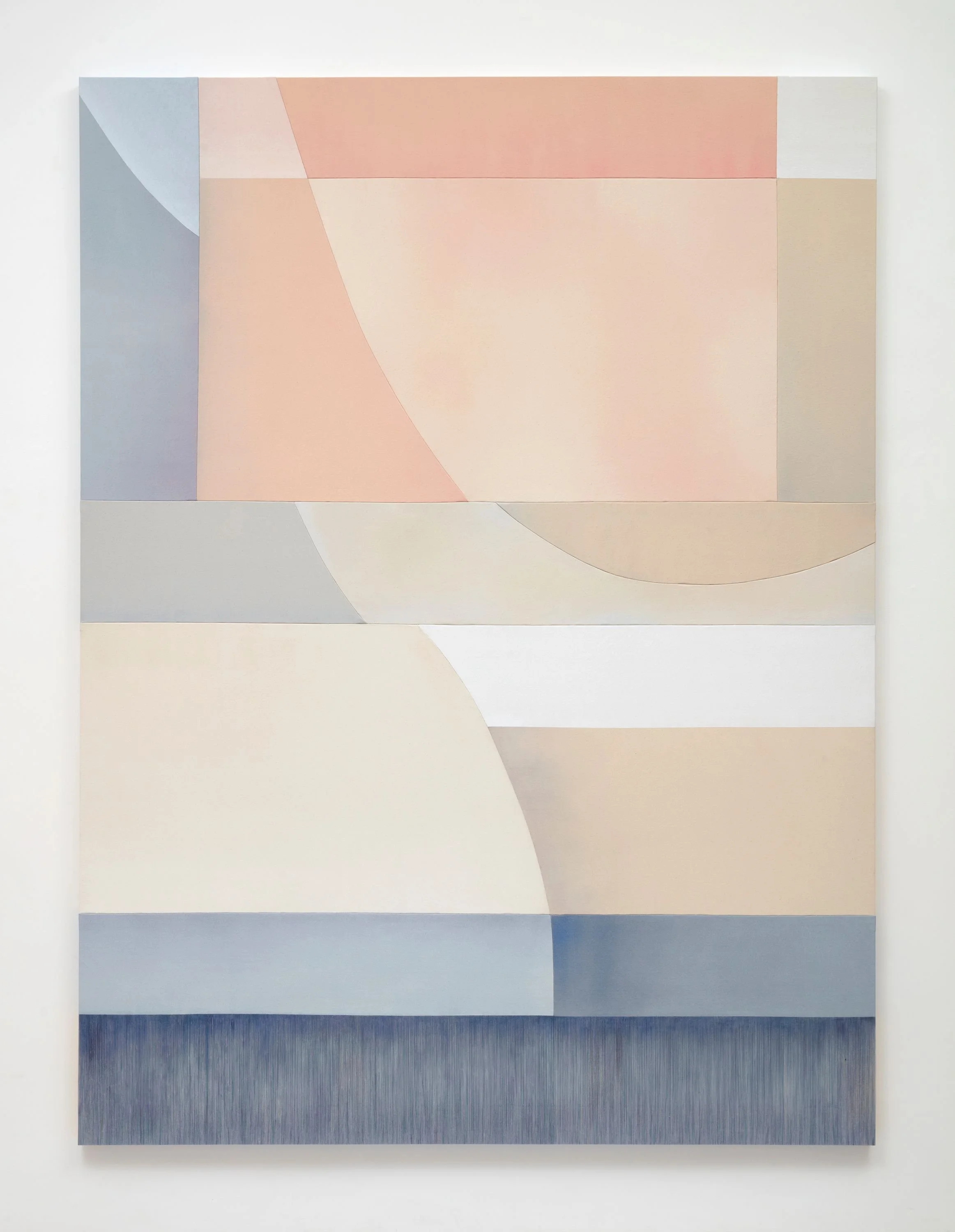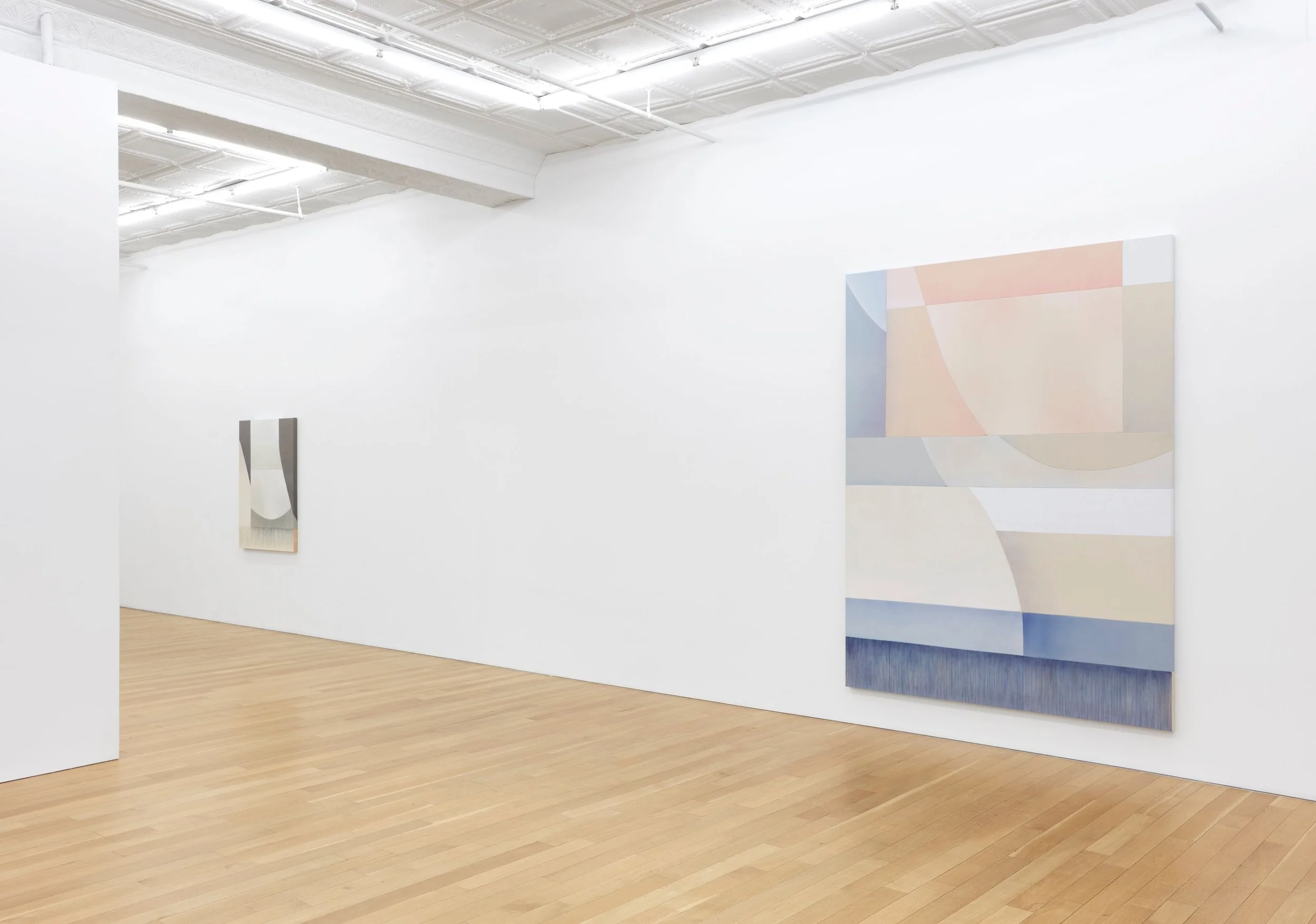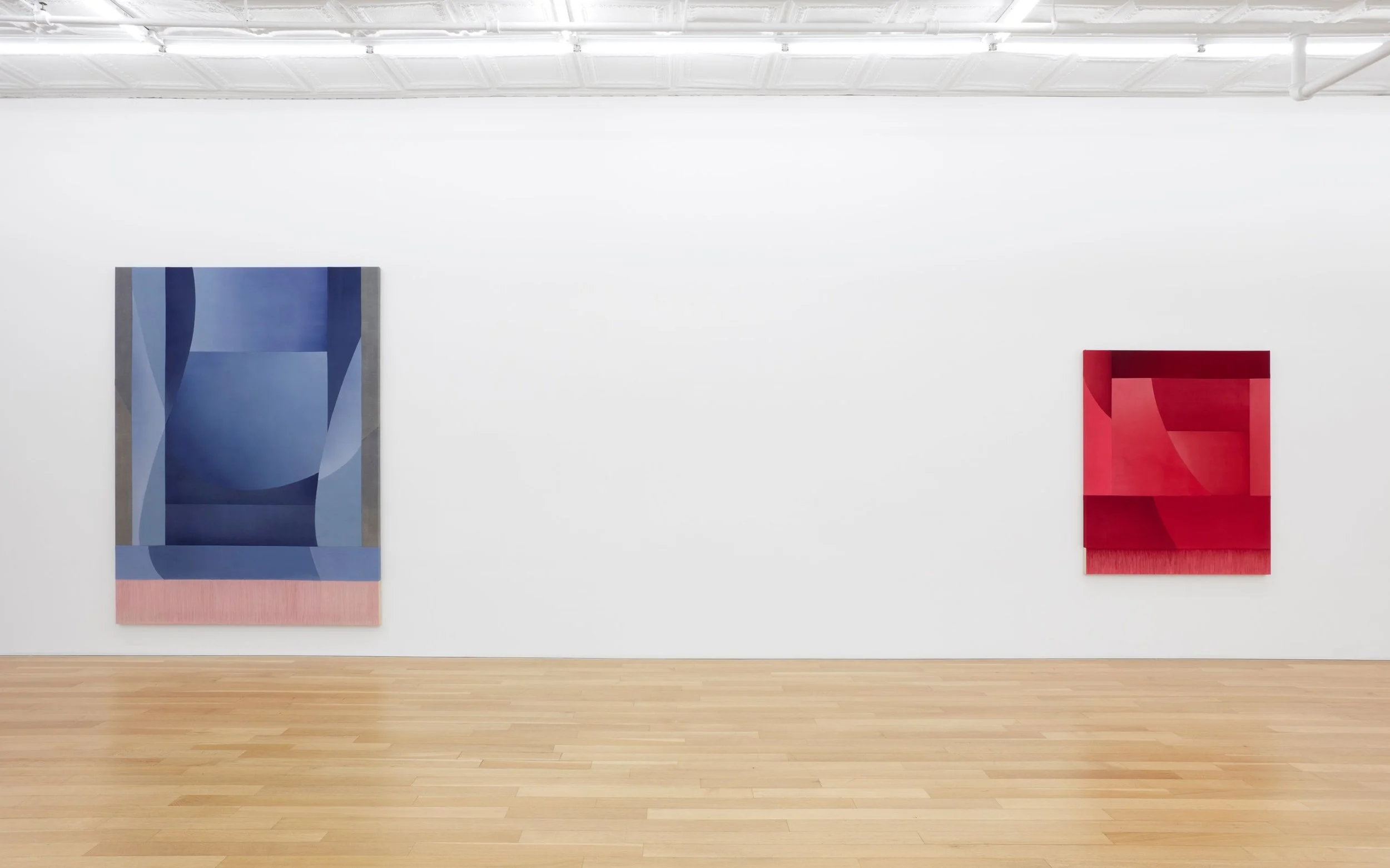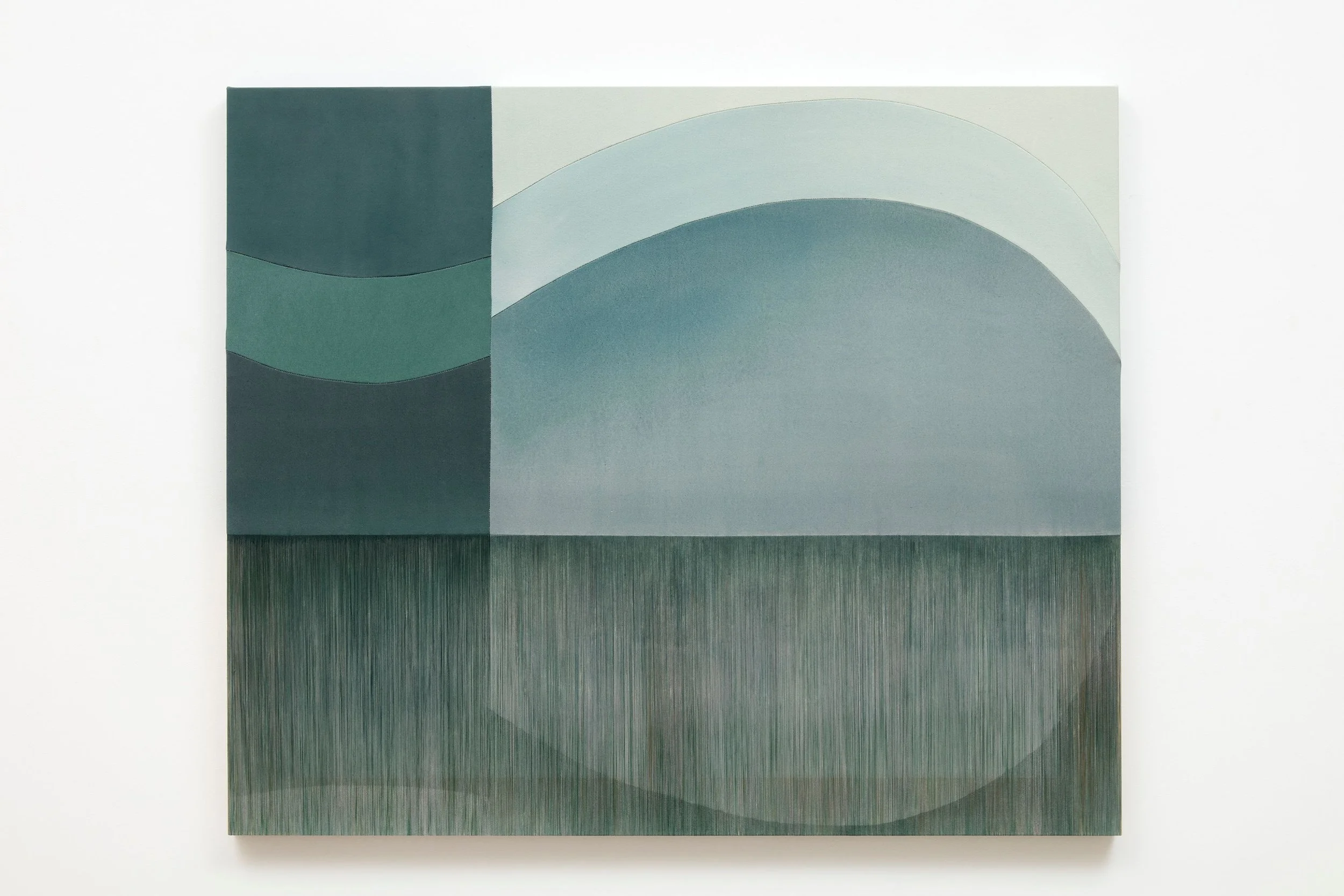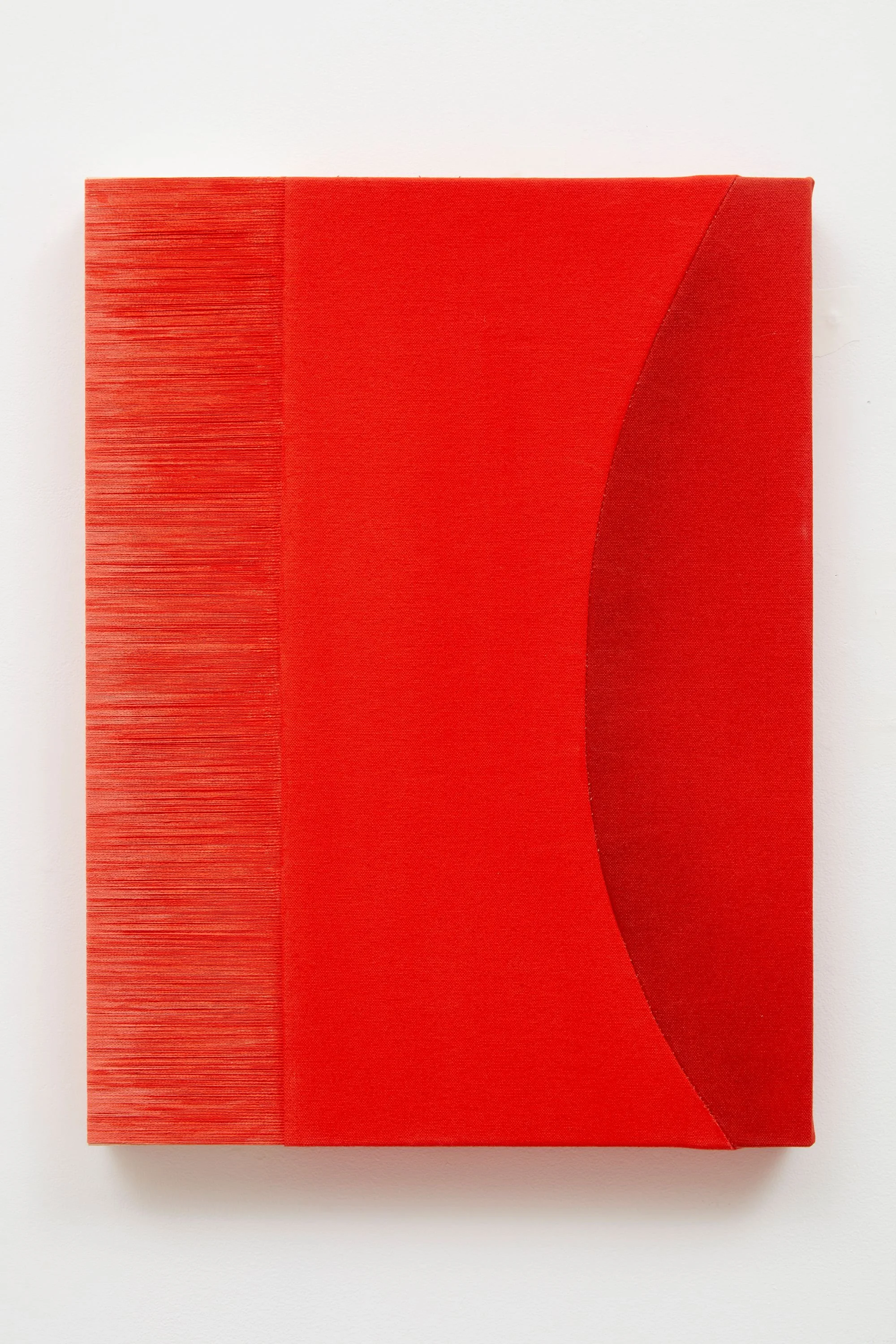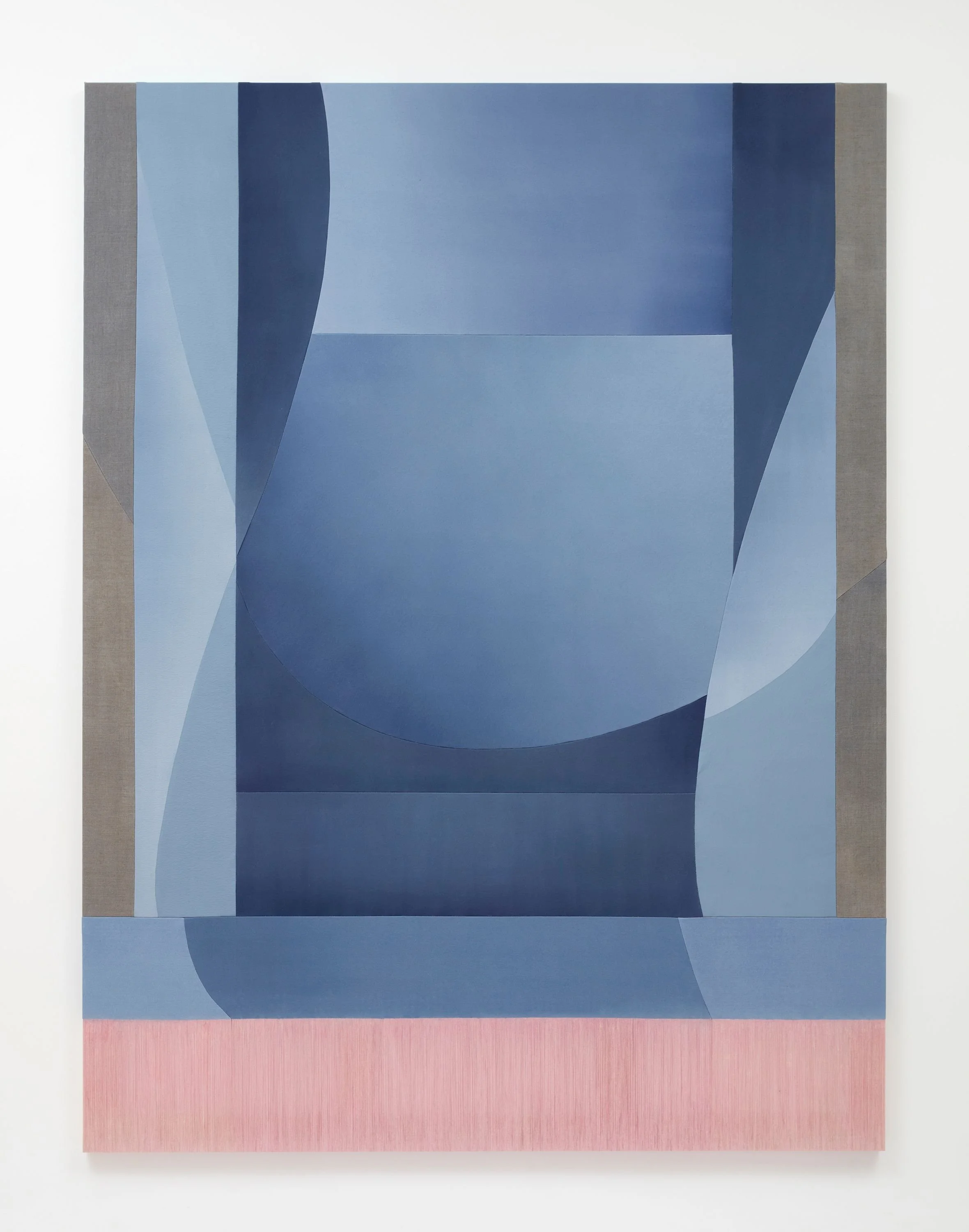Rebecca Ward: Building Up to Break Down
Math and art used to go hand in hand, one discipline was utilized to explore the boundaries of the other. Leonardo da Vinci stands as a paragon of this type of multidisciplinary genius. However, as the centuries have gone by the perceived chasm between the two subjects has only grown. One artist rediscovering the awe of the converging subjects is Rebecca Ward. Brooklyn-based but Texas-born, Ward has long been transfixed by how math influences form. Her latest show vector specter at the Peter Blum Gallery in New York encompasses 10 works.
When hearing this title of the show, the first thing that sprung to mind was a quote from mathematician Dr. Steven Strogatz who defined vectors as such: "to a mathematician, a vector (at least in its simplest form) is a step that carries you from one place to another." This definition holds a sense of truth when considering the thoughtful and exacting process Ward uses to produce her works - combining both the theoretical and the physical.
In the painting soft landing, viewers encounter a naturalistic approach to geometric shapes, where sand and peach hued semi-circles and squares bump up against similarly shaped cobalt and pale blue patterns. The entire painting, which is quite large at 96 x 72 in, is capped at the bottom by a spectacular deep blue striation pattern, calling to mind a woven textile. One perfect off-white square is nestled at the top right of the piece, but all across the canvas lines flow into unexpected places and do not meet, mimetic of a deeply oceanic sentiment. A disjointed yet flowing piece - it does not always make sense when simply examined piece by piece but taken as a whole it is harmonic in its own way. The artistic choices may seem that they cannot fit next to one another, yet standing back they do just that. The painting is marked, at first glance, by a lack of harmony but ends in the most life-like way - not perfectly neat but complete.
Ward begins all of the outlines of her work in Illustrator and then after sketching them she cuts and stitches the canvas back together creating these giant puzzle-like pieces. What starts so technically ends materially. Similarly, math often involves taking finite parts to comprehend the infinite - Ward tackles such infinite topics: queerness, motherhood, and ultimately the self in a way that is markedly unique. Viewers are not only taken on a journey but rather invited into a deeply personal place. Some artists bristle at the personal being perceived within their work, but Ward, much like her work, shirks the usual and imbues much of her own perspective on life into the canvas.
Even within this tech-enabled approach, every step contains a deeply humanistic approach, mixing control and release. The watercolors Ward uses to color the canvas also lend to the controlled chaos; she notes that in a very controlled process like the one she utilizes, she has learned "to let go of some of that amount of control. So bringing the water into play was a purposeful way of letting unknown circumstances arise.”
Letting go of control is not limited to the use of watercolors but rather also is a significant inspiration for this exhibit. Ward cites becoming a mother as a major force and influence on this exhibit. Encountering the new exhibit, one is struck with the departure from Ward's previous works, where straight lines give way to sweeping curves. She states on starting with a curving line on an axis, "I was surprised because the intention didn't necessarily start out to reveal a pregnant figure or talk about pregnant bodies, but that just kind of happened and came to the surface."
A coming to the surface of sorts is visible on the painting open secret. The majority of the canvas is taken up with a swelling blue-grey hued curve, and the striation pattern returns, a constant refrain in this exhibit. The woven-like textured part also reflects a shadow of the above curve. Pregnant figures are top of mind when considering this image that features a straight line reminiscent of a laid-out figure with a swelling stomach, and the image shadowed underneath calls to mind a grainy sonogram images. The painting is a place that meditates on things that are both hidden and revealed.
“I kind of began to cut them apart a bit more and think more about their origins as digital drawings... lines don’t connect necessarily, and that’s purposeful—sort of a nod to taking apart those forms… I like kind of building something and then breaking it down.”
Studying what is visible or not was a tenet of the 1960's Light and Space movement, and Ward carries on this tradition in her work while utilizing an entirely novel approach. Light and Space was heavily influenced by math and science given the proximity of JPL and Caltech, that provided Light and Space movement leaders like Helen Pashgian a new way to understand form and materials. Pashgian herself was more interested in delving into how light intersects or is reflected, whereas Ward's exploration of form is more about cutting the canvas to physically render what is produced technically. Ward’s take on geometric form has its roots in some of the works pioneered by the Light and Space artists.
In honor of the theme of symmetry, drawing back to the words of Dr. Steve Strogatz - "math always involves both invention and discovery: we invent the concepts but discover their consequences." Ward is able to share the discovery of self through her own inventive work The self she is so attuned to is in a state of constant flux, not in a chaotic way - but a deeply human way. vector specter is a new exhibit that encourages the viewer to accept this state of flow. By situating oneself amidst the contrasting pastels and shapes, there is a sublime contemplation on the embrace and care for one's past, present, and future self.
